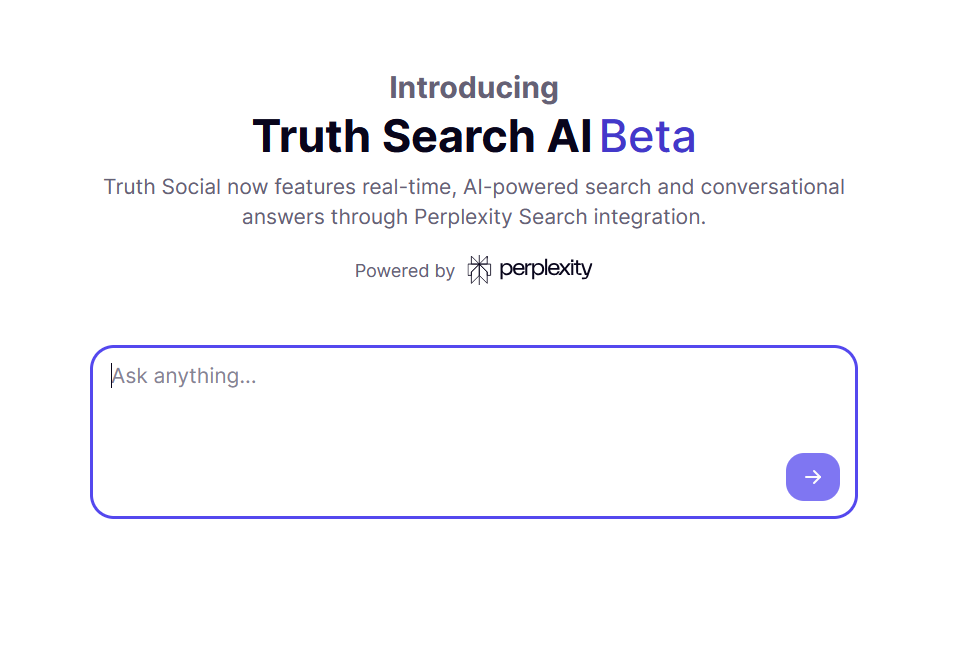
Two members of Congress have launched a formal investigation into automatic license plate reader (ALPR) company Flock and demanded it turn over details of all searches of its national camera network concerning Immigration and Customs Enforcement (ICE), Customs and Border Protection (CBP), and abortions. The move comes after 404 Media revealed that local cops were performing lookups in Flock on behalf of ICE or for immigration enforcement, and that a Texas officer searched cameras nationwide looking for a woman who self-administered an abortion.
The congressional investigation is just the latest impact from those investigations, which have resulted in a wave of similar coverage around the country and Flock making major changes to its platform. The letter announcing the investigation explicitly cites 404 Media’s articles.
Congressman Raja Krishnamoorthi, Ranking Member of the Oversight Subcommittee on Health Care and Financial Services, and Congressman Robert Garcia, Ranking Member of the House Oversight Committee, are asking Flock for a briefing and answers to their questions “To ensure that the public at large cannot be tracked without their knowledge or consent by potentially unaccountable and hostile officials,” the letter reads.
Part of that letter asks for “an account of all National Lookup searches that contain any of the following words, including the date of the search, the location of the search, the collection location for data accessed as part of that search, and the originating entity of the search.” It then specifies ICE, CBP, and “abortion.”
💡Do you work at Flock or know anything else about its technology? I would love to hear from you. Using a non-work device, you can message me securely on Signal at joseph.404 or send me an email at joseph@404media.co.
The letter also asks for voluminous documents concerning Flock’s policies on data access; how many times Flock has blocked a data request; any misuse of its system; and a mass of communications between Flock and law enforcement customers. In a press release, Krishnamoorthi’s office called it “a formal investigation into Flock Group Inc. over its role in enabling invasive surveillance practices that threaten the privacy, safety, and civil liberties of women, immigrants, and other vulnerable Americans.”
404 Media’s investigations were based on “Network Audits” which show what agency searched a set of Flock cameras and for what given reason. Flock’s national lookup feature allows “all law enforcement agencies across the country” who are also opted-in to search an agency’s cameras. For example, the Network Audit for the first ICE-related investigation came from the Danville Police Department in Illinois. This showed other police departments across the U.S. searching Danville’s cameras. The Network Audit was shared with 404 Media with researchers who asked to remain anonymous to avoid retaliation.
The abortion-related investigation was based on Network Audits obtained by Rose Terse and others and shared with 404 Media. In that case, the sheriff from the agency that performed the search told 404 Media the subject’s family was worried for her safety after she self-administered an abortion. Health surveillance experts said they still had concerns with the nationwide search. The reason for the search included in the Network Audit was “had an abortion, search for female.”
In a statement on Thursday Flock told 404 Media “We appreciate the Committee's interest in and attention to the important civil liberties issues surrounding law enforcement use of Flock Safety’s technology to protect communities and make them safer and look forward to responding to this request. As a company founded to achieve those objectives while protecting constitutional rights, we at Flock take these issues extremely seriously and appreciate the opportunity to work with you.”
After 404 Media’s investigations Flock removed a number of states from its national lookup tool. In July, Senator Ron Wyden of Oregon announced an agreement by Flock to block any out-of-state police searches related to abortion or immigration.
From 404 Media via this RSS feed
A man gave himself bromism, a psychiatric disorder that has not been common for many decades, after asking ChatGPT for advice and accidentally poisoning himself, according to a case study published this week in the Annals of Internal Medicine.
In this case, a man showed up in an ER experiencing auditory and visual hallucinations and claiming that his neighbor was poisoning him. After attempting to escape and being treated for dehydration with fluids and electrolytes, the study reports, he was able to explain that he had put himself on a super-restrictive diet in which he attempted to completely eliminate salt. He had been replacing all the salt in his food with sodium bromide, a controlled substance that is often used as a dog anticonvulsant.
He said that this was based on information gathered from ChatGPT.
“After reading about the negative effects that sodium chloride, or table salt, has on one's health, he was surprised that he could only find literature related to reducing sodium from one's diet. Inspired by his history of studying nutrition in college, he decided to conduct a personal experiment to eliminate chloride from his diet,” the case study reads. “For 3 months, he had replaced sodium chloride with sodium bromide obtained from the internet after consultation with ChatGPT, in which he had read that chloride can be swapped with bromide, though likely for other purposes, such as cleaning.”
The case study was also reported on by Ars Technica.
I was able to recreate a similar example interaction in one question on the morning of August 7th. I asked “what can chloride be replaced with?” and the bot replied “if you’re referring to replacing chloride ions (CI) in salts (like sodium chloride, NaCl), you can often substitute it with other halide ions such as: Sodium Bromide (NaBr): Replacing chloride with bromide.”
The 60-year-old man started doing just that. He spent three weeks in hospital as his psychotic symptoms slowly subsided.
To be fair to the bot, it did go on to ask me “do you have a specific context in mind?” and when I added “in food” it gave me a list of other salty things including MSG and liquid aminos. On the other hand, it did not tell me not to eat sodium bromide.
I tried ChatGPT again with another question that confirmed I was talking about sodium chloride specifically. The bot hedged its bets a bit by saying “yes… in some contexts”. But it failed to point out up top that a big, no 1, primary use case for sodium chloride (table salt) is human consumption.
The case study authors found similar, saying that when they tried to recreate the situation themselves, the bot did not “inquire about why we wanted to know, as we presume a medical professional would do.” There is both anecdotal and clinical evidence that AI can be helpful in a health context. However, this is a case of consulting an LLM for a health topic in a way that a human healthcare professional could have known to investigate further.
Taking the ChatGPT output at face value, the man in the study bought sodium bromide (which, aside from being a dog epilepsy drug, is also a pool cleaner and pesticide) and poisoned himself over the course of three months to the point of “paranoia and auditory and visual hallucinations.”
Bromism is pretty rare in 2025, but it was huge in the 1800s, and a 1930 study found that up to 8% of people admitted to a psychiatric hospital were suffering from it. Bromide began to be regulated by the FDA between 1975 and 1989, which led to a decline in cases of the syndrome.
The case study says that, “based on the timeline of this case, it appears that the patient either consulted ChatGPT 3.5 or 4.0 when considering how he might remove chloride from this diet.”
On Thursday, in a product launch livestream for ChatGPT 5, OpenAI CEO Sam Altman announced an update he called “the best model ever for health," that could put users "more in control of [their] healthcare journey." They announced that the new models will use something called "safe completions" in cases where questions might be ambiguous or harmful. Altman also spoke with an employee of the company and his wife, who’d been diagnosed with cancer, about how they had used ChatGPT to understand diagnostic letters, decide whether she would undergo radiation, and help her be "an active participant in her own care journey".
From 404 Media via this RSS feed

This article was producedwith support from WIRED.
A couple of years ago, a curious, then-16-year-old hacker named Reynaldo Vasquez-Garcia was on his laptop at his Portland-area high school, seeing what computer systems he could connect to via the Wifi—“using the school network as a lab,” as he puts it—when he spotted a handful of mysterious devices with the identifier “IPVideo Corporation.”
After a closer look and some googling, Garcia figured out that a company by that name was a subsidiary of Motorola, and the devices he’d found in his school seemed to be something called the Halo 3C, a “smart” smoke and vape detection gadget. “They look just like smoke detectors, but they have a whole bunch of features like sensors and stuff,” Garcia says.
As he read more, he was intrigued to learn that the Halo 3C goes beyond detecting smoke and vaping—including a distinct feature for discerning THC vaping in particular. It also has a microphone for listening out for “aggression,” gunshots, and keywords such as someone calling for help, a feature that to Vasquez-Garcia immediately raised concerns of more intrusive surveillance.
From 404 Media via this RSS feed

A Customs and Border Protection (CBP) agent wore Meta’s AI smart glasses to a June 30 immigration raid outside a Home Depot in Cypress Park, Los Angeles, according to photos and videos of the agent verified by 404 Media.
Meta does not have a contract with CBP, and 404 Media was unable to confirm whether or not the agent recorded any video using the smart glasses at the raid. Based on what we know so far, this appears to be a one-off case of an agent either wearing his personal device to an immigration raid, or CBP trying technology on an ad-hoc basis without a formal procurement process. Civil liberties and privacy experts told 404 Media, however, that even on a one-off basis, it signals that law enforcement agents are interested in smart glasses technology and that the wearing of smart glasses in an immigration raid context is highly concerning.
“There’s a nonzero chance the agent bought the Meta smart glasses because they wanted it for themselves and it’s the glasses they like to wear. But even if that’s the case, it’s worth pointing out that there are regulatory things that need to be thought through, and this stuff can trickle down to officers on an individual basis,” Jake Laperruque, deputy director of the Center for Democracy and Technology’s security and surveillance project, told 404 Media. “There needs to be compliance with rules and laws even if a technology is not handed out through the department. The questions around [smart glasses are ones] we’re going to have to grapple with very soon and they’re pretty alarming.”



The glasses were worn by a CBP agent outside of a Home Depot in Cypress Park, Los Angeles during a June 30 immigration raid which happened amid weeks of protests, the deployment of the National Guard and the Marines, and during which immigration enforcement in Los Angeles has become a flashpoint in the Trump administration’s mass deportation campaign and the backlash to it. 404 Media obtained multiple photos and videos of the CBP agent wearing the Meta glasses and verified that the footage and videos were taken outside of the Cypress Park Home Depot during an immigration raid. The agent in the photo is wearing Meta’s Ray Ban AI glasses, a mask, and a CBP uniform and patch. CBP did not respond to multiple requests for comment.
0:00/0:15 1×
In the video, a CBP agent motions to the person filming the video to back up. The Meta Ray Ban AI glasses are clearly visible on the agent’s face.
Meta’s AI smart glasses currently feature a camera, live-streaming capabilities, integration with Meta’s AI assistant, three microphones, and image and scene recognition capabilities through Meta AI. The Information reported that Meta is considering adding facial recognition capabilities to the device, though they do not currently have that functionality. When filming, a recording light on Meta’s smart glasses turns on; in the photos and brief video 404 Media has seen, the light is not on.
Students at Harvard University showed that they can be used in conjunction with off-the-shelf facial recognition tools to identify people in near real time.
💡Do you know anything else about this? I would love to hear from you. Using a non-work device, you can message me securely on Signal at jason.404. Otherwise, send me an email at jason@404media.co.
Multiple experts 404 Media spoke to said that these smart glasses qualify as a body worn camera under the Department of Homeland Security’s and Customs and Border Protection’s video recording policies. CBP’s policy states that “no personally owned devices may be used in lieu of IDVRS [Incident Driven Video Recording Systems] to record law enforcement encounters,” and that “recorded data shall not be downloaded or recorded for personal use or posted onto a personally owned device.” DHS’s policy states “the use of personally owned [Body Worn Cameras] or other video, audio, or digital recording devices to record official law enforcement activities is prohibited.”
Under the Trump administration, however, enforcement of regulations for law enforcement engaging in immigration raids is largely out the window.
“I think it should be seen in the context of an agency that is really encouraging its agents to actively intimidate and terrorize people. Use of cameras can be seen as part of that,” Jay Stanley, a senior policy analyst at the ACLU, told 404 Media. “It’s in line with the masking that we’ve seen, and generally behavior that’s intended to terrorize people, masking failure to identify themselves, failure to wear clear uniforms, smashing windows, etc. A big part of why this is problematic is the utter lack of policy oversight here. If an agent videotapes themselves engaging in abusive activity, are they going to be able to bury that video? Are they going to be able to turn it on and off on the fly or edit it later? There are all kinds of abuses that can happen with these without regulation and enforcement of those regulations, and the prospects of that happening in this administration seem dim.”
When reached for comment, a Meta spokesperson asked 404 Media a series of questions about the framing of the article, and stressed that Meta does not have any contract with CBP. They then asked why Meta would be mentioned in the article at all: “I’m curious if you can explain why it is Meta will be mentioned by name in this piece when in previous 404 reporting regarding ICE facial recognition app and follow up reporting the term ‘smartphones’ or ‘phone’ is used despite ICE agents clearly using Apple iPhones and Android devices,” they said. Meta ultimately declined to comment for this story.
Meta also recently signed a partnership deal with defense contractor Anduril to offer AI, augmented reality, and virtual reality capabilities to the military through Meta’s Reality Labs division, which also makes the Meta smart glasses (though it is unclear what form this technology will take or what its capabilities will be). Earlier this year, Meta relaxed its content moderation policies on hate speech regarding the dehumanization of immigrants, and last month Meta’s CTO Andrew Bosworth was named an Army Reserve Lt. Colonel by the Trump administration.
“Meta has spent the last decade building AI and AR to enable the computing platform of the future,” Meta CEO Mark Zuckerberg said in a press release announcing the deal with Anduril. “We’re proud to partner with Anduril to help bring these technologies to the American servicemembers that protect our interests at home and abroad.”
“My mission has long been to turn warfighters into technomancers, and the products we are building with Meta do just that,” Anduril founder Palmer Luckey said in the press release.
In a recent earnings call, Zuckerberg said he believes smart glasses will become the primary way people interact with AI. “I think in the future, if you don’t have glasses that have AI or some way to interact with AI, I think you’re kind of similarly, probably [will] be at a pretty significant cognitive disadvantage compared to other people and who you’re working with, or competing against,” he said during the call. “That’s also going to unlock a lot of value where you can just interact with an AI system throughout the day in this multimodal way. It can see the content around you, it can generate a UI for you, show you information and be helpful.”
Immigrations and Customs Enforcement has recently gained access to a new facial recognition smartphone app called Mobile Fortify that is connected to several massive government databases, showing that DHS is interested in facial recognition tech.
Privacy and civil liberties experts told 404 Media that this broader context—with Meta heavily marketing its smart glasses while simultaneously getting into military contracting, and the Department of Homeland Security increasingly interested in facial recognition—means that seeing a CBP agent wearing Meta AI glasses in the field is alarming.
“Regardless of whether this was a personal choice by this agent or whether somehow CBP facilitated the use of these meta glasses, the fact that it was worn by this agent is disturbing,” Jeramie Scott, senior counsel and director of the Electronic Information Privacy Center told 404 Media. “Having this type of technology on a law enforcement agent starts heading toward the tactics of authoritarian governments who love to use facial recognition to try to suppress opposition.”
The fact is that Meta is at the forefront of popularizing smart glasses, which are not yet a widely adopted technology. The privacy practices and functionality of the glasses is, at the moment, largely being guided by Meta, whereas smartphones are a largely commodified technology at this point. And it’s clear that this consumer technology that the company markets on billboards as a cool way to record videos for Instagram is seen by some in law enforcement as enticing.
“It’s clear that whatever imaginary boundary there was between consumer surveillance tech and government surveillance tech is now completely erased,” Chris Gilliard, co-director of The Critical Internet Studies Institute and author of the forthcoming book Luxury Surveillance, told 404 Media.
“The fact is when you bring powerful new surveillance capabilities into the marketplace, they can be used for a range of purposes including abusive ones. And that needs to be thought through before you bring things like that into the marketplace,” the ACLU’s Stanley said.
Laperruque, of the CDT, said perhaps we should think about Meta smart glasses in the same way we think about other body cameras: “On the one hand, there’s a big difference between glasses with a computer built into them and a pair of Oakleys,” he said. “They’re not the only ones who make cameras you attach to your body. On the other hand, if that’s going to be the comparison, then let’s talk about this in the context of companies like Axon and other body-worn cameras.”
From 404 Media via this RSS feed

A researcher has found that more than 130,000 conversations with AI chatbots including Claude, Grok, ChatGPT, and others are discoverable on the Internet Archive, highlighting how peoples’ interactions with LLMs may be publicly archived if users are not careful with the sharing settings they may enable.
The news follows earlier findings that Google was indexing ChatGPT conversations that users had set to share, despite potentially not understanding that these chats were now viewable by anyone, and not just those they intended to share the chats with. OpenAI had also not taken steps to ensure these conversations could be indexed by Google.
“I obtained URLs for: Grok, Mistral, Qwen, Claude, and Copilot,” the researcher, who goes by the handle dead1nfluence, told 404 Media. They also found material related to ChatGPT, but said “OpenAI has had the ChatGPT[.]com/share links removed it seems.” Searching on the Internet Archive now for ChatGPT share links does not return any results, while Grok results, for example, are still available.
Dead1nfluence wrote a blog post about some of their findings on Sunday and shared the list of more than 130,000 archived LLM chat links with 404 Media. They also shared some of the contents of those chats that they had scraped. Dead1nfluence wrote that they found API keys and other exposed information that could be useful to a hacker.
“While these providers do tell their users that the shared links are public to anyone, I think that most who have used this feature would not have expected that these links could be findable by anyone, and certainly not indexed and readily available for others to view,” dead1nfluence wrote in their blog post. “This could prove to be a very valuable data source for attackers and red teamers alike. With this, I can now search the dataset at any time for target companies to see if employees may have disclosed sensitive information by accident.”
404 Media verified some of dead1influence’s findings by discovering specific material they flagged in the dataset, then going to the still-public LLM link and checking the content.
💡Do you know anything else about this? I would love to hear from you. Using a non-work device, you can message me securely on Signal at joseph.404 or send me an email at joseph@404media.co.
Most of the companies whose AI tools are included in the dataset did not respond to a request for comment. Microsoft which owns Copilot acknowledged a request for comment but didn't provide a response in time for publication. A spokesperson for Anthrophic, which owns Claude, told 404 Media: “We give people control over sharing their Claude conversations publicly, and in keeping with our privacy principles, we do not share chat directories or sitemaps with search engines like Google. These shareable links are not guessable or discoverable unless people choose to publicize them themselves. When someone shares a conversation, they are making that content publicly accessible, and like other public web content, it may be archived by third-party services. In our review of the sample archived conversations shared with us, these were either manually requested to be indexed by a person with access to the link or submitted by independent archivist organizations who discovered the URLs after they were published elsewhere across the internet first.” 404 Media only shared a small sample of the Claude links with Anthrophic, not the entire list.
Fast Company first reported that Google was indexing some ChatGPT conversations on July 30. This was because of a sharing feature ChatGPT had that allowed users to send a link to a ChatGPT conversation to someone else. OpenAI disabled the sharing feature in response. OpenAI CISO Dane Stuckey said in a previous statement sent to 404 Media: “This was a short-lived experiment to help people discover useful conversations. This feature required users to opt-in, first by picking a chat to share, then by clicking a checkbox for it to be shared with search engines.”
A researcher who requested anonymity gave 404 Media access to a dataset of nearly 100,000 ChatGPT conversations indexed on Google. 404 Media found those included the alleged texts of non-disclosure agreements, discussions of confidential contracts, and people trying to use ChatGPT for relationship issues.
Others also found that the Internet Archive contained archived LLM chats.
From 404 Media via this RSS feed

Some of the first reviews ever written for the original Legend of Zelda and Super Mario Bros. have been digitized and published by the Video Game History Foundation. The reviews appeared in Computer Entertainer, an early video game magazine that ran from 1982 to 1990. The archivists at the Foundation tracked down the magazine’s entire run and have published it all online under a Creative Commons license.
Computer Entertainer has a fascinating history. It was one of the only magazines to cover video games during the market crash of the mid 1980s. “Simply put, there weren't other video game magazines in this era, at least in the United States,” Phil Salvador, the Library Director at the VGHF, told 404 Media. “In many cases, this is the only American coverage we have for this period.”
“If we want to understand video game history, we need more than the games themselves. We need to understand how they were talked about and how they were made. Primary sources from the early years of the video game industry like Computer Entertainer are scarce. They give us insight into the story of video games that there's no way to reproduce,” Salvador said.
 Image via VGHF.
Image via VGHF.
Computer Entertainer was the newsletter for the Video Take-Out, a company that sold video games through the mail. “Because they were focused on retail products, they kept on top of the video game release calendar in a way that no other enthusiast magazine did in the 1980s,” Salvador said. “This magazine is one of the only reliable sources of American release dates for computer and console games during this era. Look up any console game from the 1980s on Wikipedia, and chances are, the American release date in the article comes from Computer Entertainer.”
Digging through the archives, I found the original Legend of Zelda review and read through a year’s worth of hype and handwringing leading up to its release. Computer Entertainer was on hand at CES to talk to the unproven Nintendo in February 1987. Zelda was already out in Japan, where it ran on the disk-based Famicom system.
The CE write-up noted that the NES was a cartridge system and that Nintendo had to make unheard of adjustments to make the game work right. “A Nintendo spokesperson told us that they have included a lithium battery with a 5-year life span in the cartridge to allow it to save information you need, so the disk drive is not needed,” CE wrote.
 Image via VGHF.
Image via VGHF.
Convincing Americans to buy a Famicom-style disk drive after they’d already bought the NES was thought to be a hard sell. “We do feel, however, that it is just a question of time before Nintendo introduces the disk drive in the U.S,” CE said. “Also, for the avid long-term gamer (count all our raiders in that category!), the 5-year battery could prove frustrating as, when the battery dies, so does all the character information that has been stored on the cartridge.” CE needn’t have worried. Many of those batteries are still working today, almost 40 years later, and there’s a robust aftermarket in replacement parts when they fail.
Legend of Zelda finally came out in August of 1987 and CE gave it a glowing review, rating it 3.5 out of 4 stars. In the same issue, it gave Leisure Suit Larry and the Land of the Lounge Lizards a perfect 4 out of 4 stars. “There’s certainly no socially redeeming value to the game, which is what makes it so much fun,” CE said of the adventure game that would have nowhere near the cultural or social impact of Link and Zelda.
 Image via VGHF.
Image via VGHF.
“It's a totally different perspective to see someone trying to wrap their head around the original Super Mario Bros., or expressing skepticism about the idea of Nintendo selling a game console in the United States,” Salvador said.
The 1980s was a different era of games writing. “[Computer Entertainer] covered video and computer games as a function of their retail business to help customers better understand the game market,” Salvador said. “Being able to look back on what retailers thought about the game business back in the 1980s is a huge historical boon, but today, there's understandably more questions about the role of game criticism. Does it still make sense to cover games the same way Computer Entertainer did 40 years ago?”
From 404 Media via this RSS feed

Immigration and Customs Enforcement (ICE) is looking to buy iris scanning technology that its manufacturer says can identify known persons “in seconds from virtually anywhere,” according to newly published procurement documents.
Originally designed to be used by sheriff departments to identify inmates or other known persons, ICE is now likely buying the technology specifically for its Enforcement and Removal Operations (ERO) section, which focuses on deportations.
“This one-of-a-kind system allows sheriffs and other law enforcement agencies to quickly authenticate the identity of the person in their custody and provides record information from other jurisdictions across the country once the offender is registered in the system,” a brochure for one of the technology products, called the Mobile Offender Recognition & Identification System, or MORIS, reads. The procurement documents say ICE is also seeking to buy access to the Inmate Recognition & Identification System, or I.R.I.S., and marketing material available online says the two work in tandem with one another. I.R.I.S. claims to be the “only national, web-based iris biometric network” in that material.
💡Do you know anything else about this technology, or others being used by ICE? I would love to hear from you. Using a non-work device, you can message me securely on Signal at joseph.404 or send me an email at joseph@404media.co.
Both products are made by BI2 Technologies, a company based in Massachusetts. Neither BI2 or DHS responded to a request for comment.
On Wednesday ICE posted an announcement saying it intended to award a sole source purchase order to BI2 for licenses to both I.R.I.S and MORIS. According to BI2 marketing material, MORIS is available on Apple and Android devices. That material says it can identify an offender already enrolled in a national database.


Screenshot from BI2 marketing material.
“The Inmate Identification and Recognition System (I.R.I.S.™) positively identifies offenders using the most anatomically unique biometric—the iris,” a page on BI2’s website reads. It says that Sheriff’s Offices have been using I.R.I.S for making arrests, inmate intaking and booking, releasing inmates, and authenticating an individual. “At the root of iris recognition’s accuracy is the data-richness of the iris itself. The I.R.I.S.™ system captures over 265 points of unique characteristics in formulating its algorithmic template,” the website adds.
BI2’s system connects to multiple databases according to previous media reports, including the Sex Offender Registry and Identification System, Child Project, Senior Safety Net (a registry used to identify enrolled seniors who may be lost due to dementia) and I.R.I.S. itself.
In a 2017 press release, Sean G. Mullin, president of BI2 Technologies, said the company’s technology “will provide each Sheriff with immediate access to national, state and local criminal justice and law enforcement databases. This will enable Sheriff’s staff to positively identify previously enrolled individuals in seconds, regardless of the often fraudulent identity presented.”
This appears to be BI2’s first contract with ICE, according to federal procurement databases. An ICE source also said they had never heard of ICE working with BI2. 404 Media granted the source anonymity because they weren’t permitted to speak to the press.
404 Media previously reported on Mobile Fortify, a new ICE facial recognition app that officials can install on their work issued phones which queries a wealth of state and federal databases at once to reveal someone’s identity and whether they had been marked for deportation. That included images collected by Customs and Border Protection (CBP) when people enter or exit the United States.
From 404 Media via this RSS feed

Donald Trump’s media company is teaming up with Perplexity to bring AI search to Truth Social, the President’s X.com alternative.
Truth announced the endeavor in a press release on Wednesday. Anyone using the browser version of Truth can now use Perplexity to search the web. “We’re proud to partner with Perplexity to launch our public Beta testing of Truth Social AI, which will make Truth Social an even more vital element in the Patriot Economy,” Devin Nunes, Trump Media's CEO and Chair of the President's Intelligence Advisory Board, said in the press release.
“We’re excited to partner with Truth Social to bring powerful AI to an audience with important questions. Curiosity is the engine of change, and Perplexity’s AI is developed to empower curiosity by delivering direct, reliable answers with transparent citations that allow anyone to dig deeper,” Perplexity’s chief business officer Dmitry Shevelenko said in the press release.
According to the announcement, “the mission of Trump Media is to end Big Tech’s assault on free speech by opening up the Internet and giving people their voices back.” Which is a funny thing to put in an announcement about Trump partnering with a company whose investors include Jeff Bezos, Nvidia, and the former CEO of GitHub.
Perplexity’s Truth Social search engine will be powered by stolen content. Earlier this week, Cloudflare reported Perplexity used stealth and undeclared crawlers to evade websites that explicitly set themselves up to avoid being catalogued by LLMs. Perplexity has a long history of using scrapers that ignore the Robots Exclusion Protocol. Perplexity started as a demo that scraped Twitter with fake academic accounts backed by AI-generated research proposals.
Forbes, the New York Times, New York Post, and the Dow Jones have all accused Perplexity of plagiarism. News Corp‘s Dow Jones & Co., publisher of the Wall Street Journal, and the New York Post sued Perplexity in 2024 for copyright infringement, claiming in the federal lawsuit that Perplexity is “engaging in a massive amount of illegal copying of publishers’ copyrighted works and diverting customers and critical revenues away from those copyright holders.” In 2024, WIRED reported on the accusations of Perplexity’s plagiarism and Perplexity almost immediately plagiarized the story. When New York Times tech workers went on strike last year, Perplexity CEO Aravind Srinivas offered to help the Times keep the paper going.
Big Tech has aligned itself with the Trump administration since before the election, seeing an alliance of opportunity for deregulation of AI in particular.
But is the Perplexity-powered AI aggregation machine “woke?” I asked a few questions to find out. I wanted to know: Is Trump in the Epstein files?“There is no evidence in the recently reviewed and released government ‘Epstein Files’ of a ‘client list” or documentation placing Donald Trump as implicated in Jeffrey Epstein's criminal actions,” it said. “While Trump’s name, like many other prominent individuals, appears in public records of Epstein’s social and business contacts (such as guest lists or flight logs, widely reported over the years), there is no mention in current official documents or filings that directly implicates Trump as a criminal participant in Epstein’s sex trafficking activities.”
How does Truth Social’s search engine think the American economy is doing?
“The American economy is currently facing significant headwinds, with signs of slowdown—most notably by a contraction in GDP, rising inflation, and softening labor market conditions—though some leaders still emphasize areas of resilience,” Truth Search AI said.
Are the tariffs to blame?“Recent tariff increases in the United States have generally had a negative effect on economic growth and employment, raising costs for businesses and consumers while providing only limited benefits to some manufacturing sectors,” Truth Search AI said.
Damn. It’s woke as hell.
From 404 Media via this RSS feed
Subscribe
Join the newsletter to get the latest updates.
SuccessGreat! Check your inbox and click the link.ErrorPlease enter a valid email address.

Hundreds of AI-powered automated license plate reading cameras paid for by Lowe’s and Home Depot and stationed in the hardware stores’ parking lots are being fed into a massive surveillance system that law enforcement can access, according to records obtained using a public records request.
The records, obtained from the Johnson County, Texas Sheriff’s Office by the Electronic Frontier Foundation (EFF) and shared with 404 Media, show the sheriff’s office is able to tap into Flock license plate reading cameras at 173 different Lowe’s locations around the U.S. and that it can tap into cameras and gunshot-detecting microphones at dozens of Home Depot stores within Texas. The records are the latest to shed light on how expansive Flock’s surveillance network has become, and highlights that it includes cameras that are operated by both police and private businesses.
“What we're learning is that two of the country's most popular home improvement stores are contributing to the massive surveillance dragnet coordinated by Flock Safety,” Dave Maass, director of investigations at the Electronic Frontier Foundation, told 404 Media. “Do customers know that these stores are collecting their data and sharing indiscriminately? Probably not. Have these companies given thought about how this data might put their customers in danger, whether it's cops stalking their exes or aggressive ICE agents targeting yard workers? Probably not. If these companies want customers to feel safe in their homes, then they should make sure they're also safe where they buy their supplies."
Flock’s automated license plate reader (ALPR) cameras are stationed along roads or at entrances to parking lots around the United States, and constantly scan the license plates of cars that drive by. Because there are Flock cameras around the country, Flock often has a snapshot of people’s movements which police can search, typically without a warrant.
Government agencies that have Flock cameras can choose to contribute their data to either a statewide or nationwide network, meaning cops around the state or country can access them. Flock told 404 Media that Flock cameras operated by private companies have more restrictive sharing options.
From 404 Media via this RSS feed
Congress’ website for the U.S. Constitution was changed to delete the last two sections of Article I, which include provisions such as habeas corpus, forbidding the naming of titles of nobility, and forbidding foreign emoluments for U.S. officials.
The last full version of the webpage, archived by the Internet Archive on July 17, still included the now-deleted sections. Parts of Section 8 of Article I, as well as all of Sections 9 and 10 of Article I are now gone from the live site. The deletions, as of August 6, are also archived here. The change was spotted by users on Lemmy, an open-source aggregation platform and forum.
💡Do you know anything else about what happened to this webpage, or web admin under the Trump administration in general? I would love to hear from you. Using a non-work device, you can message me securely on Signal at sam.404. Otherwise, send me an email at sam@404media.co.
This webpage, maintained by the U.S. government, hasn’t changed significantly in the entire time it’s been saved by the Internet Archive’s Wayback Machine—since 2019. The page for the Constitution on the National Archives website remains unchanged, and shows the entire document.
From 404 Media via this RSS feed

Scientists have discovered million-year-old artifacts made by a mysterious group of early humans on the Indonesian island of Sulawesi, according to a breakthrough study published on Wednesday in Nature.
The extraordinary find pushes the archaeological record of Sulawesi back by about 800,000 years, and confirms that hominins, the broader family to which humans belong, crossed treacherous ocean passages to reach the island, where they crafted simple tools.
The tool-makers may have been related to a group of archaic humans—nicknamed “hobbits” for their short stature—that lived on nearby Flores Island. But while the hobbits left behind skeletal remains, no fossils from the Sulawesi group have been unearthed. The tools, found at a site called Calio in South Sulawesi, are the only record of their existence for now.
“The discovery of these ancient stone tools at Calio is another important piece of the puzzle in our understanding of the movements of early hominins from the edge of the Asian landmass into the isolated zone of islands known as Wallacea,” said Adam Brumm, a professor of archaeology at Griffith University and a co-author of the new study, in an email.
“A major question remaining is the identity of the archaic humans of Sulawesi,” he added, noting that they might be Homo erectus, or descendents of this influential early human species that migrated from Africa to Asia. ”But until we have their fossils, who they were will remain a mystery.”
 Stone tools dated to over 1.04 million-years-old, scale bars are 10mm. Image: M W Moore
Stone tools dated to over 1.04 million-years-old, scale bars are 10mm. Image: M W Moore
The discovery was made by Budianto “Budi” Hakim, an Indonesian archaeologist who has spent decades searching for traces of archaic humans in Sulawesi. Hakim spotted one of the artifacts while scouring the region’s sandstone outcrops, prompting an excavation that unearthed a total of seven flaked tools crafted from chert rock. The remains of extinct elephants and pigs were also found in the sedimentary layers at the site, hinting at an ancient origin.
The team used two independent methods to date the tools, both of which placed their age at a minimum of 1.04 million years old, making the artifacts the earliest evidence for hominin occupation of Sulawesi by far.
“Budi has been searching for this evidence for much of his life, so it is very exciting indeed,” said Brumm. “But it is not so surprising that we now have evidence for hominins on Sulawesi by one million years ago; we have long suspected that there had been a very deep history of human occupation of this island based on the discovery (in 2010) of stone tools on Flores to the south that date to at least a million years ago. Sulawesi was probably where the first hominins to set foot on Flores actually came from, so it made sense to us that the human presence on Sulawesi would go back at least as far as a million years, if not considerably earlier.”
“And personally, it did not surprise me that Budi unearthed this new find,” he continued. “He is a renowned figure in Indonesian archaeology and undoubtedly has the ‘golden touch.’”
The tools are sharp-edged flakes that were probably cut from larger rocks obtained from a nearby river channel. Like many tools made by hominins across time and regions, they would have been useful for cutting and scraping materials, though their exact purpose is unknown.
The tools “can’t tell us very much about the behaviour or cognitive capacities of these early humans, other than that they were tool-makers who clearly understood how to choose stones with suitable properties and to fracture them in a controlled way to produce a supply of usable tools,” explained Brumm. “Over the past 2.5 million years, many different hominin species (including our own, Homo sapiens) have made stone tools that are essentially indistinguishable from the Sulawesi tools.”
In addition to their mysterious identity, it is unclear how these early humans crossed ocean waters to reach these island shores, given that the shortest distance between the Asian mainland and Sulawesi would have been 30 miles, at minimum.
“This is too far to swim (in any case the ocean currents are too strong),” Brumm explained. “It is also very unlikely these archaic hominins had the cognitive ability to develop watercraft that were capable of making sea voyages, or indeed of the advanced planning required to gather resources and set sail over the horizon to an unseen land.”
“Most likely, they crossed to Sulawesi from the Asian mainland in the same way rodents and monkeys are suspected to have done; that is, by accident, perhaps as castaways on natural ‘rafts’ of floating vegetation,” he concluded.
It’s incredible to imagine these early humans getting caught up in tides or currents, perhaps stranded at sea for days, only to serendipitously wash up on a vast island that would become home to untold generations. Hakim, Brumm, and their colleagues hope to find more evidence of this long-lost population in the coming years, but for now, the stone tools offer a rare window into the lives of these accidental seafarers and their descendants.
From 404 Media via this RSS feed

Sitting in my office in NYC, I sent a CNC machine in a guy’s workshop in Wisconsin a 40 by 25 pixel drawing and watched it flip hand painted wooden blocks across a grid, one by one, until the glorious smiling 404 Media logo appeared—then watched it slowly erase, like a giant Etch A Sketch, moving on to the next drawing.
Designer Ben Holmen created the Kilopixel, a giant grid made of 1,000 wooden blocks that a robot arm slowly turns to form user-submitted designs. “Compared to our modern displays with millions of pixels changing 60 times a second, a wooden display that changes a single pixel 10 times a minute is an incredibly inefficient way to create an image,” Holmen wrote on his blog detailing the project.
Choosing what to make the pixels from was its own hurdle: Holmen wrote that he tried ping pong balls, Styrofoam balls, bouncy balls, wooden balls, 3D printed balls, golf balls, foam balls, “anything approximately spherical and about 1-1.5in in diameter.” Some of these were too expensive; others didn’t hold up well to paint or drilling. Holmen settled on painted wooden blocks, each serving as one 40mm pixel. To be sure each block was exactly the right size, he built 25 shelves and drilled 40 holes into each, threading the blocks onto the shelves using metal wires. “This was painstaking and time consuming - I broke it down into multiple sessions over several weeks,” he wrote. “But it did create a very predictable grid of pixels and guaranteed that each pixel moved completely independently of the surrounding pixels.
From there, he used a CNC machine, which moves on the X, Y, and Z axes: across the grid, up and down, and the flipping finger that pokes inward to turn the pixel-blocks. Holmen wrote that he connected a Raspberry Pi to the CNC controller, which queries an API to get the next pixel in the design, activates the “pixel poker,” and reads a light sensor to determine whether the pixel face is painted black or raw wood.
Two webcams stream the Kilopixel to Youtube, with a view of the whole grid and a view of the poker turning the blocks one by one. “The camera, USB hub, and light are hung from the ceilingwith a respectful amount of jank for the streaming phase of this project,” Holmen wrote. Anyone with a Bluesky account can connect their account and submit a pixel drawing for the machine to create, and people can upvote submissions they want to see next. Once it’s finished, the system uploads a timelapse of the painting to the site and posts it to Bluesky, tagging the submitter.
Drawn by @samleecole.bsky.social, completed in 44m39 Draw your own at kilopx.com
I'm recording timelapses for every submission - this took 41 minutes in real time. Soon you'll be able to submit your own images to be drawn on my kilopixel! Can't wait to share this with the world and see what y'all come up with
This entire process took him six years. I asked Holmen in an email what it cost him: “Probably around $1000 and hundreds of hours of my time,” he told me.
And the project isn’t over: It still requires some babysitting. Sometime early Tuesday morning, the rig got misaligned while working on an elaborate pixellated American Gothic, with the flipper-finger grasping at the air between blocks instead of turning them. Holmen had to manually reset it in the morning, entering the feed to tinker with the grid.
He said he plans to run it 24/7, but that it might not go flawlessly at first. “I've had to restart the controller script twice in 10 hours, and restart the YouTube stream once,” he said on Monday, before the overnight error. “I am planning to run it for a few days or weeks depending on interest, then I'll move on to a different control concept. I don't want to babysit a finicky device all the time.”
When I checked Kilopixel’s submissions on Monday, someone had drawn the Hacker News logo—a sure sign that a hug of death was coming. I asked Holmen if he’s had issues with overload. “Just one—I undersized my web server for the attention it got,” he told me on Monday evening. “It's been #1 on Hacker News for about 10 hours, which is a lot of traffic. kilopx.com has received about 13,000 unique visitors today, which I'm very pleased with. The article has received about 70,000 unique visitors so far.”
The Kilopixel experiment might also be setting a time-to-penis record: In the six hours it’s been online as of writing this, I haven’t seen anyone try to make the robot draw a dick, yet. Holmen mentioned “defensive features” built into the web app in his blog for mitigating abuse, but so far people have behaved themselves. “I expect the best and worst out of people on the internet. I built an easy way for admins to delete gross or low effort submissions and enlisted a couple of trusted friends to keep an eye on the queue with me,” Holmen told me. “I'm certain there are ways to work around things, or submit enough to make cleanup a chore, but I decided to not lock things down prematurely and just respond as things evolve.”
From 404 Media via this RSS feed

We start this week with Joseph’s story about nearly 100,000 ChatGPT conversations being indexed by Google. There’s some sensitive stuff in there. After the break, Emanuel tells us about Wikipedia’s new way of dealing with AI slop. In the subscribers-only section, Sam explains how we got to where we are with Steam and Itch.io; that history goes way back.
Listen to the weekly podcast on Apple Podcasts,Spotify, or YouTube. Become a paid subscriber for access to this episode's bonus content and to power our journalism. If you become a paid subscriber, check your inbox for an email from our podcast host Transistor for a link to the subscribers-only version! You can also add that subscribers feed to your podcast app of choice and never miss an episode that way. The email should also contain the subscribers-only unlisted YouTube link for the extended video version too. It will also be in the show notes in your podcast player.
Nearly 100,000 ChatGPT Conversations Were Searchable on GoogleWikipedia Editors Adopt ‘Speedy Deletion’ Policy for AI Slop ArticlesThe Anti-Porn Crusade That Censored Steam andItch.ioStarted 30 Years Ago
From 404 Media via this RSS feed
Wikipedia editors just adopted a new policy to help them deal with the slew of AI-generated articles flooding the online encyclopedia. The new policy, which gives an administrator the authority to quickly delete an AI-generated article that meets a certain criteria, isn’t only important to Wikipedia, but also an important example for how to deal with the growing AI slop problem from a platform that has so far managed to withstand various forms of enshittification that have plagued the rest of the internet.
Wikipedia is maintained by a global, collaborative community of volunteer contributors and editors, and part of the reason it remains a reliable source of information is that this community takes a lot of time to discuss, deliberate, and argue about everything that happens on the platform, be it changes to individual articles or the policies that govern how those changes are made. It is normal for entire Wikipedia articles to be deleted, but the main process for deletion usually requires a week-long discussion phase during which Wikipedians try to come to consensus on whether to delete the article.
However, in order to deal with common problems that clearly violate Wikipedia’s policies, Wikipedia also has a “speedy deletion” process, where one person flags an article, an administrator checks if it meets certain conditions, and then deletes the article without the discussion period.
For example, articles composed entirely of gibberish, meaningless text, or what Wikipedia calls “patent nonsense,” can be flagged for speedy deletion. The same is true for articles that are just advertisements with no encyclopedic value. If someone flags an article for deletion because it is “most likely not notable,” that is a more subjective evaluation that requires a full discussion.
At the moment, most articles that Wikipedia editors flag as being AI-generated fall into the latter category because editors can’t be absolutely certain that they were AI-generated. Ilyas Lebleu, a founding member of WikiProject AI Cleanup and an editor that contributed some critical language in the recently adopted policy on AI generated articles and speedy deletion, told me that this is why previous proposals on regulating AI generated articles on Wikipedia have struggled.
“While it can be easy to spot hints that something is AI-generated (wording choices, em-dashes, bullet lists with bolded headers, ...), these tells are usually not so clear-cut, and we don't want to mistakenly delete something just because it sounds like AI,” Lebleu told me in an email. “In general, the rise of easy-to-generate AI content has been described as an ‘existential threat’ to Wikipedia: as our processes are geared towards (often long) discussions and consensus-building, the ability to quickly generate a lot of bogus content is problematic if we don't have a way to delete it just as quickly. Of course, AI content is not uniquely bad, and humans are perfectly capable of writing bad content too, but certainly not at the same rate. Our tools were made for a completely different scale.”
The solution Wikipedians came up with is to allow the speedy deletion of clearly AI-generated articles that broadly meet two conditions. The first is if the article includes “communication intended for the user.” This refers to language in the article that is clearly an LLM responding to a user prompt, like "Here is your Wikipedia article on…,” “Up to my last training update …,” and "as a large language model.” This is a clear tell that the article was generated by an LLM, and a method we’ve previously used to identify AI-generated social media posts and scientific papers.
Lebleu, who told me they’ve seen these tells “quite a few times,” said that more importantly, they indicate the user hasn’t even read the article they’re submitting.
“If the user hasn't checked for these basic things, we can safely assume that they haven't reviewed anything of what they copy-pasted, and that it is about as useful as white noise,” they said.
The other condition that would make an AI-generated article eligible for speedy deletion is if its citations are clearly wrong, another type of error LLMs are prone to. This can include both the inclusion of external links for books, articles, or scientific papers that don’t exist and don’t resolve, or links that lead to completely unrelated content. Wikipedia's new policy gives the example of “a paper on a beetle species being cited for a computer science article.”
Lebleu said that speedy deletion is a “band-aid” that can take care of the most obvious cases and that the AI problem will persist as they see a lot more AI-generated content that doesn’t meet these new conditions for speedy deletion. They also noted that AI can be a useful tool that could be a positive force for Wikipedia in the future.
“However, the present situation is very different, and speculation on how the technology might develop in the coming years can easily distract us from solving issues we are facing now, they said. “A key pillar of Wikipedia is that we have no firm rules, and any decisions we take today can be revisited in a few years when the technology evolves.”
Lebleu said that ultimately the new policy leaves Wikipedia in a better position than before, but not a perfect one.
“The good news (beyond the speedy deletion thing itself) is that we have, formally, made a statement on LLM-generated articles. This has been a controversial aspect in the community before: while the vast majority of us are opposed to AI content, exactly how to deal with it has been a point of contention, and early attempts at wide-ranging policies had failed. Here, building up on the previous incremental wins on AI images, drafts, and discussion comments, we workshopped a much more specific criterion, which nonetheless clearly states that unreviewed LLM content is not compatible in spirit with Wikipedia.”
From 404 Media via this RSS feed

Collective Shout, an organization “for anyone concerned about the increasing pornification of culture,” based its claim that Steam and Itch.io host “hundreds of rape and incest games” on user-generated tags, and the organizations that co-signed Collective Shout's open letter to payment processors did not respond to 404 Media’s questions about whether they tried to verify its accusations against the game platforms before signing on their support.
Collective Shout's July 11 letter urged Paypal, Visa, Mastercard, Japan Credit Bureau, Paysafe, and Discover to "cease processing payments on gaming platforms which host rape, incest and child sexual abuse-themed games."
On July 15, Steam, a digital storefront for PC games operated by Valve, updated its guidelines to ban “certain kinds of adult content,” blaming restrictions from payment processors and financial institutions. And on July 23, Itch.io, a massively popular indie game store, delisted every game marked NSFW so that those games will no longer be indexed in search results or appear on main pages, but re-indexed free adult NSFW content on Friday. “We are still in ongoing discussions with payment processors and will be re-introducing paid content slowly to ensure we can confidently support the widest range of creators in the long term,” the site’s founder Leaf Corcoran said in an announcement.
Itch.io also blamed pressure from payment processors—which in turn have been pressured by a campaign spearheaded by Collective Shout, a “grassroots campaigns movement against the objectification of women and the sexualisation of girls,” according to its site.
“Most of the content found within the games, including the graphics and the developers descriptions, are too distressing for us to make public,” the letter says. “A Collective Shout team member has conducted extensive research using a Steam account set up for this purpose. She has documented content including violent sexual torture of women, and children including incest related abuse involving family members.”
I asked Collective Shout if it would show me the research, name any of the 500 games they found other than No Mercy, or disclose what that research entailed. “We found almost 500 other games tagged with rape or incest on Steam. Some of these included extreme sexual torture and abuse of women,” Caitlin Roper, campaigns manager at Collective Shout, told me in an email. "Given Steam had not responded at any point, we wrote an open letter to payment processors asking them to stop processing payments on gaming platforms which host rape, incest and child sexual abuse themed games. This letter was signed by leaders in the field, including academics, advocates and experts on violence against women and children." Roper did not disclose any specifics about the group's research. I asked Roper if the Collective Shout team played any of those tagged games to check the context of the content, and did not receive a response.
Steam tags, however, are assigned by players, not developers. They’re frequently trolled, with users assigning inappropriate tags to games with unrelated content. Keywords and tags have never been a useful metric for distilling nuance. Collective Shout is repeating history: In the early days of the internet, a researcher successfully fomented one of the first mainstream internet porn panics by claiming that bulletin boards were full of extreme sexual material that children could access.
In 1995, a Carnegie Mellon engineering student, Marty Rimm, claimed that he surveyed 917,410 “sexually explicit pictures, descriptions, short stories, and film clips” from across the internet. More rigorous researchers and online freedom of speech advocates at the time tore his “research” and the subsequent salacious Time magazine article about it apart.
They found that Rimm didn’t examine most of Usenet or the internet at large, but was looking primarily at adult-oriented bulletin boards, which were often behind a paywall (an adult would have to call a board administrator and give them their credit card number, in many cases) or otherwise difficult for children to access. “Further, of the 917,410 files, all text and audio files were deleted from analysis, and only a very small number of images were actually examined,” technologist and academic J. Metz wrote in a paper examining the Rimm report in 1996. “The actual number of descriptions of images retained for the content analysis on which the study’s conclusions are based was 292,114.” Rimm found only nine websites (out of the more than 11,000 sites on the Word Wide Web at the time) that could be classified as R or X-rated, Metz noted. Attorney and longtime internet rights activist Mike Godwin, who was one of the many researchers who analyzed the Rimm report, told me that Rimm was likely only looking at text descriptions of images from adult BBS files without looking at their content, and assumed that those descriptions were accurate. But people often trolled the descriptions of files in bulletin boards or cracked jokes in them—in much the same way Steam tags are trolled by users.
Time ran the most salacious possible angle of the poorly conducted report (the author of that story has since said he regrets it), and religiously affiliated groups that already wanted to stop porn from becoming mainstream on the internet took hold of it. Senator Chuck Grassley brought the July 3, 1995 Time issue to the senate floor for a hearing about the Communications Decency Act, which would amend the Telecommunications Act and hold internet service providers, including BBS owners, liable for any content transmitted that could be interpreted as "obscene, lewd, lascivious, filthy, or indecent."



The Time July 3, 1995 'Cyberporn' story spread. Accessible in full at the Internet Archive
The Christian Coalition, a conservative grassroots political organization founded by Pat Robertson, also jumped on the report and used it to lobby for internet restrictions based on it. “The Religious Right is only a few weeks away from final victory in its effort to shut American citizens out of the Internet as a medium for uncensored communication,” technologist Howard Rheingold wrote at the time. “Discourse on the Net will be restricted to that which is judged suitable for young children in strict households.”
As journalist Ana Valens first reported in her investigations into the Collective Shout campaign (and the group’s claim that its open letter sent to payment processors successfully convinced them to pressure the platforms into changing their policies for adult games), several co-signatories of the letter are anti-porn groups that have pushed for broader legislation against the adult industry. (Valens’ articles on this topic were removed by Vice after publication.)
Haley McNamara, Senior Vice President of Strategic Initiatives and Programs at the National Center for Sexual Exploitation (NCOSE) signed the letter. NCOSE, formerly known as Morality in Media, has long pressured payment processors to remove support from adult content creators. The organization has also lobbied in favor of age verification laws that have spread to more than 30 states in the U.S., which experts say are not only invasive of everyone’s privacy but are ineffective at best, and only exacerbate problems of piracy, nonconsensual abuse material, and exploitation.
I asked NCOSE whether they directly viewed the content Collective Shout mentioned in its letter—or if they’d looked at the organization’s research themselves—before signing it. “Collective Shout collected and analyzed the materials and can best speak to everything they found,” a spokesperson said.
Helen Taylor, Vice President of Impact at Exodus Cry, also signed the letter. Exodus Cry is an organization that aims to end the “commercial sex industry.” In September 2020, Exodus Cry helped a campaign called “TraffickingHub” gather two million signatures on a petition to shut down Pornhub. “We’re calling for Pornhub to be shut down and its executives held accountable for these crimes,” the petition said—rhetoric echoed by extremist online groups that then called for the sentencing and execution of adult industry executives. Exodus Cry’s goal is to support laws that “end the sex industry,” as they write on their website. “We are asking political powers to enact and enforce laws that will eradicate exploitation in the sex industry and eliminate sex trafficking. This is absolutely necessary to restore and preserve freedom and justice in society.”
Exodus Cry did not respond to requests for comment.
Even if and when the tags are accurate, “rape” and “incest” themes in media, whether it’s literature, visual arts, personal memoirs, or games (which are often a combination of these things, especially from indie developers) can represent a range of themes that’s impossible to define. Talking about one’s own sexual abuse is not the same as glorifying sexual abuse, but relying on keywords and tags creates that false equivalency, and seems to be what Collective Shout relied on for its pressure campaign.
Meanwhile, game makers and consumers are caught in this warpath.
“Many trans and queer folks either lived off of or supplemented their income with their earnings on Itch,” Boarlord, an indie game developer who makes choose-your-own-adventure games that she describes as “deeply furry, deeply trans, deeply filthy,” told me days before Itch re-indexed those games. “If these restrictions remain, it means the blanket end of so many livelihoods. This sinks us deeper into economic precarity and our cultures, into obscurity or oblivion, dealer’s choice.”
I asked Boarlord if she thinks tags are a reliable way to understand what’s in a game. “Absolutely not,” she said. “I think there’s something truly profane about flattening an experience—art, entertainment, porn, whatever—to a handful of keywords. All of us live in a world dictated by an apparatus of punishment and surveillance. Because of this apparatus, whatever convenience tagging offers is immediately undermined by its ability to surveil and round us up. We have to dismantle the apparatus first, otherwise we’ll always end up here.”
Ted Litchfield, a journalist at PC Gamer, noted that the “nearly 500 other rape and incest games” figure Collective Shout cites in its own timeline of the campaign doesn’t make sense, and the only way to arrive at it would be to count duplicates, DLCs, and unrelated games removed in that time. “Counting up all ‘Removed’ and ‘Retired’ games on SteamDB since the 15th, I got 456 hits, but that includes double counts for most of the offending games (many of which were both ‘Removed’ and ‘Retired’), DLC and demos for those games (also given the double-r treatment), and a number of unrelated games that were taken off Steam during this time,” Litchfield wrote.
“No one platform nor marketplace should be responsible for so much media. We’ve concentrated too much of our culture to a handful of platforms like Patreon, Steam, and even Itch, though the latter, in my opinion, is less concerned with monopolization,” Boarlord said. “That makes them strategic targets for bad faith pressure campaigns. And in the case of Itch, they’re so small and lacking in resources there’s no leverage against the likes of Stripe, Visa, MasterCard. Sex workers have run our throats hoarse screaming about this: With the power to demonetize platforms that so many queer and trans people rely on to survive, payment processors effectively dictate our culture now. Visa, MasterCard, Stripe, Paypal, they decide who lives and dies.”
Visa, Mastercard and PayPal did not respond to my request for comment on the open letter or about whether they reviewed the contents of the games. Mastercard published a statement on August 1: "Mastercard has not evaluated any game or required restrictions of any activity on game creator sites and platforms, contrary to media reports and allegations. Our payment network follows standards based on the rule of law. Put simply, we allow all lawful purchases on our network. At the same time, we require merchants to have appropriate controls to ensure Mastercard cards cannot be used for unlawful purchases, including illegal adult content."
From 404 Media via this RSS feed

The state of Florida is suing some of the biggest porn platforms on the internet, accusing them of not complying with the state’s law that requires adult sites to verify that visitors are over the age of 18.
The lawsuit, brought by Florida Attorney General James Uthmeier, is against the companies that own popular porn platforms including XVideos, XNXX, Bang Bros and Girls Gone Wild, and the adult advertising network TrafficFactory.com. Several of these platforms are owned by companies that are based outside of the U.S.
Uthmeier alleges that the companies are violating both HB3 and the Florida Deceptive and Unfair Trade Practices Act.
On January 1, Florida joined 19 other states that require adult websites to verify users’ ages. Twenty-nine states currently have nearly identical legislation enacted for porn sites, or have bills pending. Age verification legislation has failed in eight other states.
“Multiple porn companies are flagrantly breaking Florida’s age verification law by exposing children to harmful, explicit content. As a father of young children, and as Attorney General, this is completely unacceptable,” Uthmeier said in a press release about the lawsuit. “We are taking legal action against these online pornographers who are willfully preying on the innocence of children for their financial gain.”
The Free Speech Coalition along with several co-plaintiffs, including the sex education platform O.school, sexual wellness retailer Adam & Eve, adult fan platform JustFor.Fans, and Florida attorney Barry Chase filed a challenge to Florida’s law earlier this month. “These laws create a substantial burden on adults who want to access legal sites without fear of surveillance,” Alison Boden, Executive Director of the Free Speech Coalition, said in a press release published in December. “Despite the claims of the proponents, HB3 is not the same as showing an ID at a liquor store. It is invasive and carries significant risk to privacy. This law and others like it have effectively become state censorship, creating a massive chilling effect for those who speak about, or engage with, issues of sex or sexuality.”
After the Supreme Court upheld Texas’ age verification legislation in June, the Free Speech Coalition dropped the lawsuit in Florida. "However, we are continuing to monitor the governmental efforts to restrict adults' access to the internet in Florida," Mike Stabile, the director of public policy for the Free Speech Coalition, said in a statement to the Tallahassee Democrat. “The Paxton decision does not give the government carte blanche to censor content it doesn't like.”
Experts say, and more than a year of real-world anecdotal evidence has shown at this point, that age verification laws are invasive of user’s privacy, chilling for Constitutional adult speech, and don’t work to keep children away from potentially harmful material.
As it has in many states once age verification legislation went into effect, Pornhub pulled access from Florida entirely on January 1, replacing the homepage with a video message from activist and performer Cherie DeVille: "As you may know, your elected officials in Florida are requiring us to verify your age before allowing you access to our website," DeVille says. " While safety and compliance are at the forefront of our mission, giving your ID card every time you want to visit an adult platform is not the most effective solution for protecting our users, and in fact, will put children and your privacy at risk.”
From 404 Media via this RSS feed

Immigration and Customs Enforcement (ICE) is urgently looking for a company to help it “dominate” digital media channels with advertisements in an attempt to recruit 14,050 more personnel, according to U.S. government contracting records reviewed by 404 Media. The move, which ICE wants to touch everything from social media ads to those played on popular streaming services like Hulu and HBO Max, is especially targeted towards Gen Z, according to the documents.
The push for recruitment advertising is the latest sign that ICE is trying to aggressively expand after receiving a new budget allocation of tens of billions of dollars, and comes alongside the agency building a nationwide network of migrant tent camps. If the recruitment drive is successful, it would nearly double ICE’s number of personnel.
“ICE has an immediate need to begin recruitment efforts and requires specialized commercial advertising experience, established infrastructure, and qualified personnel to activate without delay,” the request for information (RFI) posted online reads. An RFI is often the first step in the government purchasing technology or services, in which it asks relevant companies to submit details on what they can offer the agency and for how much. The RFI adds “This effort ties to a broader national launch and awareness saturation initiative aimed at dominating both digital and traditional media channels with urgent, compelling recruitment messages.”
Specifically, ICE wants the eventual contractor to find platforms with the highest potential for reaching recruits, including YouTube, Facebook, Instagram, Snapchat, LinkedIn, and X, according to the documents. The list also includes Hulu, HBO Max, and Amazon Prime, according to the documents.
The documents say ICE is looking for more than 42 million impressions in its target audience groups. Impressions are essentially how many times an advertisement is seen, in this case by a particular demographic. What ICE sees as “high-value audience segments” include former military and law enforcement personnel, legal professionals, and “Gen Z and early-career professionals,” the documents say.
The documents add ICE wants the contractor to use all manner of advertising tricks and practices to target these people, including “geofencing,” which involves selecting a geographic area and delivering advertisements to devices at the location, and “behavioral” practices.
💡Do you work at ICE? Did you used to? I would love to hear from you. Using a non-work device, you can message me securely on Signal at joseph.404 or send me an email at joseph@404media.co.
ICE is trying to hire Enforcement and Removal Operations (ERO) officers, the part of ICE that deals with deportations; Homeland Security Investigations (HSI) agents, a section that often deals with serious organized crime; and attorneys and support staff, according to the documents.
The documents say each advertisement, be that a video, carousel, or story format, will need to be approved by ICE. It is unclear if any of the material might violate any of the social media platforms’ policies. YouTube, for example, previously removed advertisements from the Israeli government. ICE has already run some recruitment ads on social media, including one with Uncle Sam branding that says “America Needs You.” The ad mentions a $50,000 signup bonus, $60,000 student repayment, and other benefits.
Notably, the documents say that ICE is seeking to provide the contract to a woman-owned small business: “federal contracting officers may set aside contracts (or orders) for WOSBs [Women Owned Small Businesses] in industries in which the SBA [Small Business Administration] determines that WOSBs are historically underrepresented in federal procurement. The SBA has recognized that WOSB are historically underrepresented,” the RFI reads. The Trump administration has for the most part attempted to end diversity, equity, and inclusion programs across the board. Critics have also pointed out that ICE is offering new recruits student loan forgiveness, another policy that the Trump administration has tried to end across the government.
ICE did not immediately respond to a request for comment.
Morale is reportedly low inside ICE, according to a July report in which The Atlantic spoke to a dozen current and former ICE agents and officers. “It’s miserable,” one career ICE official told the outlet. One veteran agent reportedly said that ICE’s Homeland Security Investigations (HSI), which traditionally deals with drug traffickers or child sexual abusers, are not taking on new cases so there is more time to make immigration-related arrests. “It’s infuriating,” the person said, adding that they are thinking about quitting rather than “arresting gardeners.”
Earlier this year Stephen Miller, the White House deputy chief of staff, gave ICE a quota of 3,000 arrests a day. After that, ICE agents descended onto Los Angeles, targeting Home Depots and other broad locations, triggering massive protests against the agency and its tactics. After ICE received its new budget, border czar Tom Homan floated that the agency needs to arrest 7,000 people a day.
But on Sunday Politico reported the administration has claimed in court that no such quota exists. “DHS has confirmed that neither ICE leadership nor its field offices have been directed to meet any numerical quota or target for arrests, detentions, removals, field encounters, or any other operational activities that ICE or its components undertake in the course of enforcing federal immigration law,” a government attorney said.
Last week, ICE said it had made 1,000 “tentative” job offers since July 4.
From 404 Media via this RSS feed

A researcher has scraped nearly 100,000 conversations from ChatGPT that users had set to share publicly and Google then indexed, creating a snapshot of all the sorts of things people are using OpenAI’s chatbot for, and inadvertently exposing. 404 Media’s testing has found the dataset includes everything from the sensitive to the benign: alleged texts of non-disclosure agreements, discussions of confidential contracts, people trying to use ChatGPT to understand their relationship issues, and lots of people asking ChatGPT to write LinkedIn posts.
The news follows a July 30 Fast Company article which reported “thousands” of shared ChatGPT chats were appearing in Google search results. People have since dug through some of the chats indexed by Google. The around 100,000 conversation dataset provides a better sense of the scale of the problem, and highlights some of the potential privacy risks in using any sharing features of AI tools.
OpenAI did not dispute the figure of around 100,000 indexed chats when contacted for comment. When asked for comment, OpenAI provided 404 Media with a statement from the company’s chief information security officer CISO Dane Stuckey. “We just removed a feature from [ChatGPT] that allowed users to make their conversations discoverable by search engines, such as Google. This was a short-lived experiment to help people discover useful conversations. This feature required users to opt-in, first by picking a chat to share, then by clicking a checkbox for it to be shared with search engines.”
The researcher provided 404 Media with access to the new dataset. 404 Media granted them anonymity because they were not permitted to talk about the project publicly.
Some of the material in the dataset includes:
Someone uploading what they describe as a copy of OpenAI’s nondisclosure agreement for visitors to the company’s headquartersA user trying to figure out if they should send one last message to an ex-girlfriend who they describe as their “great love,” with ChatGPT then writing a draft of that messageAn owner of a specific named business asking ChatGPT to write a contract for themChats that although were written by an anonymous account, include many identifying details including peoples’ names, potentially linking them to activity on ChatGPT
All of these chats and others are still publicly available on ChatGPT’s website.
The issue ultimately stems from a “share” feature in ChatGPT. Interactions with ChatGPT are private by default. Users can enable the share feature, which moves their interactions to a publicly accessible page, so the user can send a copy of the conversation to others if they wish. Because this page is public Google is able to index them.
💡Do you know anything else about this? I would love to hear from you. Using a non-work device, you can message me securely on Signal at joseph.404 or send me an email at joseph@404media.co.
The share feature creates a predictably formatted link which allowed people to search Google for the indexed material. As Fast Company noted in its report, it is not clear if ChatGPT users understood they were making their chat publicly available. In response to some user chats being available on search engines, OpenAI removed that feature.
“Ultimately we think this feature introduced too many opportunities for folks to accidentally share things they didn't intend to, so we're removing the option. We're also working to remove indexed content from the relevant search engines. This change is rolling out to all users through tomorrow morning. Security and privacy are paramount for us, and we'll keep working to maximally reflect that in our products and features,” Stuckey’s statement added.
Google did not provide a statement in time for publication.
Although OpenAI may be working to remove indexed content from Google or other search engines, third-parties have already grabbed the material en masse, such as this researcher.
From 404 Media via this RSS feed

Welcome back to the Abstract! Here are the studies this week that boiled my blood, warmed my heart, and got permanently inked into my memory.
First, a new look at some very old tattoos. Then: a posthumous discovery from a beloved defunct telescope, an update on lava planets, the adventures of translocated mole rats, and some provocative style tips from chimpanzees.
Ink of ages
Some 2,300 years ago, a woman from the nomadic Pazyryk culture of Siberia was inked with elaborate tattoos, including dynamic animal fights. Her body and its mesmerizing displays have survived to this day, along with many other “Pazyryk ice mummies” that were immaculately preserved in permafrost tombs.
Now, scientists have imaged the woman’s epic epidermis with high-resolution techniques that expose hidden details of her tattoos, yielding new insights about the artists and tools that made them.
“While the images on the hands are mostly simple designs, the most elaborate of which is a rooster on the left thumb, the forearms display some of the most complex Pazyryk tattoos currently identified,” said researchers led by Gino Caspari of the Max Planck Institute of Geoanthropology.
Photogrammetrically created 3D model of the mummy, showing: A) texture derived from visible-spectrum photographs; and B) texture derived from near-infrared photography. Credit: M. Vavulin
The results revealed that the middle-aged woman was tattooed with at least two different instruments: a multipoint tool that provided a uniform line thickness, as well as a finer tool with a single point. The pigment was probably crafted from soot or burnt plants, but the nature of the “needles” remains unclear (they may have been plant thorns, for instance). The new images exposed the superior quality in the scene on her right forearm compared to the left, which suggests that at least two artists worked on the decorations over multiple sessions.
“The right-forearm tattoo likely required at least two sessions to complete, beginning with the ungulate [stag] positioned at the wrist,” the researchers said. “This clever placement utilizes the contours of the wrist to enhance the ungulate’s form, allowing the tattoo to flow across the arm.”
“The right-forearm tattoo also features techniques that are challenging from the tattooist’s perspective” yet “the linework is clear and consistent, with nearly double the amount of outlining present on the left forearm,” they added. “Taken as a whole, this evidence suggests that the left forearm tattoo was created by an artist with less experience or skill.”
A figure depicting the tattoos and placement on the body. Image: Svetlana Pankova
Tattoos represent a diversity of meanings and practices across regions and time, and it’s important not to color bodies of the past with our present biases. While we may never know exactly what these dramatic scenes meant to the Pazyryk culture, it is amazing that we can behold them in such fantastic detail thousands of years after this woman, and her tattooists, lived and died in the Altai Mountains.
“Modifications to soft tissue, including tattooing, present a temporal paradox as they are simultaneously permanent over the lifetime of the marked individual, yet transitory from an archaeological perspective,” said Caspari and his colleagues. “The interpretation of tattoos in prehistoric contexts necessarily remains speculative and may never reach the intricate richness of meaning with which the images and practices were originally associated.”
If this story piques your interest in the ancient artistry of Altai Mountain cultures (understandable!), check another recent study about the stylistic shifts in the region’s rock art depictions of elk over thousands of years.
In other news…
Tidal wave over Arecibo
Tidal waves are normally thought of as massive walls of ocean water, but the sky is also rippled by tides of solar energy generated by the Sun’s activity. This week, a team discovered a “strong and unusual” tidal wave that reverberated about 160 to 300 miles above Puerto Rico’s Arecibo telescope on the night of March 17, 2015.
“We found that this tide is surprisingly powerful, with wind speeds around 25 m/s—larger than those seen in more common tidal patterns,” said researchers led by Yun Gong of Wuhan University. “This is the first time such a strong 4.8-hour tide has been reported at these heights.”
The team noted that the wave was probably amplified by a geomagnetic storm, though the finer details of such complex interactions are still up in the air. The study is a testament to the ongoing afterlife of Arecibo, which sadly collapsed in 2020, but remains a legendary icon in part because of its extensive archives that date back to 1963.
The floor is lava
Just in case you haven’t expressed gratitude to Earth lately, here’s a study about “lava planets,” which are rocky worlds that orbit so close to their stars that their day-sides reach 5,000°F.
Artist concept of a lava planet. Image: ESO/L. Calcada
“Unlike rocky planets in the solar system, lava planets maintain a long-lived, shallow magma ocean on their day-side, even after billions of years of interior cooling,” said researchers led by Charles-Édouard Boukaré of York University. “Such asymmetric magma oceans have no analogues in the solar system and their internal dynamics and evolution are still poorly understood.”
Fortunately, lava planets are a current priority for observation by the James Webb Space Telescope, so we may learn more about them soon. Even as we ride out more intense heat waves on Earth, pour a cold one out for these tortured worlds.
Moving day for mole rats
Burrowing animals are disproportionately threatened by the steady march of human land developments (citation: Watership Down). European blind mole rats, for instance, “have long been persecuted, and many species are threatened by extinction as they only exist in a few small and isolated populations,” according to a new study.
A model of a blind mole rat in Ukraine. Image: Максим Яковлєв
Though maligned in the past, these unique rodents are increasingly recognized as beneficial ecosystem engineers—plus, they are textbook “ugly-cute,” an aesthetic I cherish. To that end, the study followed up on translocation efforts that moved vulnerable colonies to new and safer sites.
“In the seven projects, a total of 141 blind mole rat individuals were translocated, of which 56 were males and 85 were females,” said researchers led by Orsolya Moldován of the University of Debrecen in Hungary. These “recent conservation efforts… were mostly successful and reversed the 200-year trend of decline. The method is thus promising for saving blind mole rats from extinction and for ensuring their long-term survival.”
It’s uplifting to know that there’s still a light at the end of the tunnel for these burrowing beauties.
The hottest summer look: Butt-grass
We’ll close with a recent study that I first saw reported by Sabrina Imbler of Defector about chimps that put grass in their buttholes as a style choice. I suggest you read their article through to the final reveal, which is surprisingly heart-warming for a tale of bum-grass. But for our purposes, here's the upshot:
After witnessing chimps at Zambia’s Chimfunshi sanctuary adorning their ears with grass, a team “observed the birth of a related variant in which chimpanzees started to wear the grass from their rectums,” a trend that spread “to most of the group within six weeks,” according to researchers led by Edwin J.C. van Leeuwen of Utrecht University in the Netherlands.
An analysis of the grass-wearing behaviors. Image: Van Leeuwen, Edwin J.C. et al.
“Though we primarily observed grass-in-rectum behavior by the same individual (the plausible innovator), the behavior was adopted by at least five other individuals from the same group, of whom two are still performing it to this day, almost a year after initial observations,” the team said.
It’s another reminder to be the plausible innovator you want to see in the world. You never know what hare-brained scheme (or grass-butted one) might catch on.
Thanks for reading! See you next week.
From 404 Media via this RSS feed

After spending last week with Tesla fans who wanted the world to know that their Tesla purchases had nothing to do with politics, I spent this weekend at the Tesla diner protests, talking to people who disagreed with that stance.
On both Saturday and Sunday, organisers from Resist the Coup and Tesla Takedown Santa Monica brought crowds and sieg-heiling Elon Musk-shaped car-dealership inflatables to the front of the new diner. Drums, megaphones, and shouts from the assembled protesters were accompanied by horns from passing drivers responding to “Honk If You Hate Elon” signs.
Steven was there on the first day of the protest with his 16-year-old daughter.
Protesters outside the diner on Sunday. Photo: 404 Media
“He’s a piece of shit, but let’s get the political science stuff out of the way,” Steven told me when I asked if he thought support of Tesla could be considered apolitical. “Elon Musk has platformed white supremacists and anti-semites on X. He got rid of all the moderation. He put back accounts that were clearly neo-Nazis. He's changed algorithms to promote that type of hate. Him and DOGE did massive cuts in the government, including our civil services. He's cut cancer research. Did I mention he was a giant piece of shit?”
“He's cut our aid to Africa, which will result, without exaggeration, in millions of women and children and innocent people dying. Millions,” he said. “I'm not a big fan of people who give the Hitler salute. I mean, I'm kind of fussy like that. He gave it twice at Trump's inauguration,” he continued. “He's a Nazi. And he cheats at video games. You have another question?”
“The guy saluted Hitler twice on national television,” Dave, lead organiser for Tesla Takedown Santa Monica. Dave spent both days of the protest drumming and calling chants, like “when you eat your Tesla burger, you’re funding mass murder, when you eat your Tesla fries, another hungry child dies”.
“We fear for the future of democracy in the United States of America,” he said. “And there is no bigger poster child for the corruption and the influence of money in politics than Elon Musk.”
Protesters brought signs and costumes. Photo: 404 Media
Dave explained that targeting Tesla, as a publicly-traded company, is one of the only levers available for people to express disapproval of Musk’s actions. The protests took place days after a July 23 Tesla earnings call which disclosed an almost 12 percent year-on-year decline in revenue—its “steepest year-over-year revenue decline in at least a decade.” The share price is currently around 15 percent lower than it was a year ago.
Antonia and Stas had come to the diner for date night; they had known the protest was happening and “were talking and joking about that in the car,” as it would be a “feature” of their date. Antonia said the diner “is capitalism”, and “you can't separate capitalism from politics.” But, she’d been thinking: “wouldn't it be great if he just focused on ideas like this? Making people's lives better and easier, in a way that, like, wasn't interfering with elections around the globe, and at home in America?”
“Elon’s a full blown fascist,” said Josh Greene on Saturday afternoon. “I mean, he donated $250 million to put Trump back in the White House. He bought Twitter to spread right wing conspiracy theories, and he's helping to dismantle democracy in this country.”
A diner guest leaving during the protest. Photo: 404 Media
A group of teenagers walking by yelled “four more years! Trump is the greatest!” at Greene as I was interviewing him. “Read a book, pal!” he yelled back.
The teenagers hung around to try to interrupt the protest further. They spent about an hour standing very close to, yelling at, and filming individual protesters, shouting about Trump.
One Tesla-owner, Holly, was standing and watching this happen. ’It makes me sort of sad and emotional to watch,” she said. “ I can tell they're trying to incite some sort of, like, interaction, violent or otherwise, and I don't know. It's just, I feel like it's a sad state right now.”
Holly had brought her kids to the diner for lunch as she thought it would be fun. She said she didn’t identify with the Tesla community, but had “just wanted an electric car”, and she thinks it’s annoying that Tesla has become a political flashpoint.
“I don't think Musk is a good guy. I don't want him in politics. I don't want him running our country,” she said.
She said that, politically, her allegiance was with the protesters. But she didn’t think there was anything that Musk could do that would encourage her to get rid of the car: “my privilege is, it doesn't impact me one way or another,” she said.
People passing in cars honked their horns, waved, or flashed lights as they saw the protesters. A few times, I saw a Tesla slow down or pull up alongside the protesters to chat. Dave from Tesla Takedown later told me that “a lot of older Tesla model owners pump their fists and say, yeah, we're with you too, we just got to wait until our lease is up.”
Other passing cars filmed or yelled out of their windows. Twice, I saw Cybertruck drivers interact with the protest. The first time, a woman gave them the middle finger out of her car window, and the second time, a man who had driven past once lapped the block, to do a sieg heil over his kid’s head.
A man does a "Hitler salute" from his car as he drives by the protesters on Sunday afternoon. Photo: 404 Media
Dean Barlage, a resident of the adjacent building, came down to see the protest. He said that he felt the saluting Musk balloons and protesters’ signs with swastikas or curse words were inappropriate for children eating at the diner, who might ask their parents for explanations of what they were seeing or reading.
Toby Bronson, who had helped organise the protest with Resist the Coup, was also at the diner both days. He said that they had experienced much more support than harassment from passing cars, which “shows what the city is all about… LA is the one fighting back and this town's not going to quit. We're not going to stop.” He said that he hadn’t been bothered by the teenagers - “it's pretty hilarious considering they're all about 13. So they can't vote,” he said. “The only thing I said to them was, you know, you guys are the same age as the people on the Epstein list,” he told me. “They didn’t like that.”
On Tuesday, 29th July, I was contacted by Tesla Takedown Santa Monica who said that they had received anonymous messages online, threatening a drive-by pepper spraying event, if they came back to the diner the following weekend. That evening, Bronson posted that the protest would be happening again - every weekend until the diner closes.
From 404 Media via this RSS feed

This is Behind the Blog, where we share our behind-the-scenes thoughts about how a few of our top stories of the week came together. This week, we discuss messy Tea and our first livestreamed event.
SAM: We had an awesome time hanging out with a couple hundred of our Angeleno friends at Rip.Space on Wednesday! The full live podcast is here (start around 1:45) and it’ll be in your feeds soon, too. The first portion of the livestream is partially us testing that it worked, but then an impromptu panel happened with the Rip.Space folks that’s extremely worth a watch.
From 404 Media via this RSS feed

Independent game developer Paolo Pedercini wanted to announce his new game Future? No Thanks! a few weeks ago, but said it was delayed because Steam found a screenshot it planned to share “had suggestive themes.” The screenshot? A low-polygon woman in a short dress with her legs closed together.
Future? No Thanks! was meant to be announced weeks ago but the Steam page didn't pass the first review because a screenshot marked as "Suitable for all ages" had suggestive themes. The screenshot? This one:
— Molleindustria - Wishlist FUTURE? NO THANKS! (@molleindustria.org) 2025-07-30T14:31:04.532Z
Future? No Thanks!’s page did land on Steam, just a little late. “I thought the screenshot flagging was funny because they seem to have interpreted that low poly character as having no underwear, maybe due to the purple color matching the hair,” Pedercini, who releases games under the name Molleindustria, told 404 Media.
According to Pedercini, he had submitted the game to Steam earlier this month, a process which requires a developer to send in a trailer and at least four screenshots that are “suitable for all ages.” He marked the screenshot above as suitable, but Steam rejected it on July 10.
“The trailer does have a suggestive clip with a sexbot, and a hyperbolic disclaimer…so I guess that's fair,” Pedercini said. He pushed back against Steam and asked for a review. “Both reviews took more than a week, which I think it's longer than usual. I wonder if they were figuring out how to respond to the payment processor deal.”
Pedercini’s problems with Steam came at a time when the platform was facing pressure from credit card companies to remove adult games from its platform. Earlier this month, the credit card companies Visa and Mastercard pressured video game distributors Steam and Itch to remove adult games from their storefronts.
The payment processors themselves were bowing to a pressure campaign from the organization Collective Shout, which describes itself as being “for anyone concerned about the increasing pornification of culture” and which argued that many of the adult games normalized violence against women. But a lot of games with queer themes were kicked off Itch and Steam as part of the purge, and it’s not always clear what the lines are and who is drawing them.
“We live in a golden age of independent cultural production, but digital distribution is still extremely concentrated. There are a handful of entities that can instantly make huge swaths of digital culture disappear,” Pedercini said. “We thought digital marketplaces like the Apple Store were the main agents of market censorship, but now we've found out there are even more monopolistic companies upstream from them.”
Those upstream monopolies, pressured by outside lobbying groups, are now defining what can and can’t be said online. Payment processors have pushed other kinds of content to the margins before, video game storefronts are just the latest example. “Such marketplaces may default to freedom of expression because it's cheaper to not moderate content, but they will easily bow to calls for censorship because it's less trouble than advocating for controversial products. It cuts both ways: a few years ago, major online stores removed products showing the Confederate flag,” Pedercini said.
“Conservative groups are willing to exploit these vulnerabilities and are trying to put illegal content such as child pornography on a continuum with porn and queer representations,” he added. “I think they genuinely believe that homosexuality is in the same set as bestiality or rape, as something forbidden by the Bible or whatever, but we can't let that view be enshrined into law or into commercial content guidelines.”
Pedercini has been through something like this before. His 2007 game Operation: Pedopriest, a game about the well documented abuse of children in the Catholic Church, earned the ire of an Italian Christian group which accused the game of depicting virtual child pornography. “The accusation immediately lead the provider to shut down the site, legal charges, and a point of order all the way up to the Italian parliament,” Pedercini said.
Gamers, a group that can be particularly aggressive when politically activated, have launched a counter-pressure campaign on the payment processors. It’s too early to tell if Visa and Mastercard will bend to gamers the same way it did to collective shout.
The future of video games as a form of cultural expression is at risk of massive damage. “The status of video games as culture is still being negotiated. If thematic restrictions like the ones defined by itch.io were to be applied to movies or books, limiting their distribution, it would be major news immediately,” Pedercini said. “Arguably, most video games are currently moving away from culture and morphing into pseudo-cultural objects like slot machines, or apps for wasting time and feeling nothing. The problem is that those of us who still make video games as some kind of artform will be caught in the dragnet.”
Steam did not immediately respond to 404 Media’s request for comment.
From 404 Media via this RSS feed
In late May, Apple announced what seemed on its face to be a big, positive development for iPad owners: It was going to begin selling repair parts for iPads to the general public, which is a requirement of a series of new right-to-repair laws. “With today’s announcement, we’re excited to expand our repair services to more customers, enabling them to further extend the life of their products—all without compromising safety, security, or privacy,” Brian Naumann, Apple’s vice president of AppleCare, said in a press release announcing the move.
The announcement was generally covered positively by the press: “Save Money, Make Your iPad Last Longer,” a Forbes headline read, for example. But independent repair professionals who have used the program told 404 Media that the prices Apple is charging for some repair parts are absurdly high, and that this functionally means that the iPad is as unrepairable as it has always been.
“As is typical for Apple, they’ve been pushing and testing the limits as time has gone on, and now they pushed too far. There are plenty of other examples of absurdly priced parts from Self Service, but these iPad parts are by far the worst,” Brian Clark, the cower of the iGuys Tech Shop, told 404 Media.
“For years, Apple effectively considered the iPad non-repairable. They did not offer any repairs on iPads, and Apple authorized service providers were not allowed to do iPad repairs of any kind, so this was a huge shift in their view of iPads. I was excited until the day they actually put the parts up and seeing the ridiculous prices of things, it was really, really disappointing,” Clark added. “It kind of sends the message that they don’t really want iPads to be repaired.
Clark points out that a new charge port for an iPad Pro 11, a part that goes bad all the time, costs $250 from Apple. Aftermarket charge ports, meanwhile, can be found for less than $20. “It’s a very basic part, and I just can’t see any reasonable explanation that part should be $250 from Apple,” he said. “That’s a component that probably costs them a few dollars to make.”
Clark said a digitizer for an iPad A16 is $200. That part can be bought from third-party suppliers for $50, and the iPad A16 sells brand new from Apple for $349, Clark said. The replacement screen assembly for an iPad Pro 13 costs $749 from Apple.
Jonathan Strange, the founder of XiRepair, put together a spreadsheet of all the new parts and found that more than a third of the iPad parts Apple is now selling are not being sold at a price that is economically viable for independent repair shops. The way he calculated this was by taking the price of the part, adding in $85 for labor and a 10 percent profit margin for a repair shop. If the total repair cost was more than half the price of buying a totally new device, he considers it to be not economically viable.
“Almost NO iPads with multi-repair needs (meaning an iPad has a cracked screen and needs a battery, for example), is a viable option when using only genuine OEM service parts,” Strange said.
Strange said that when analyzing iPad part prices, he found that nearly every part seemed to be correlated with the replacement value of the device versus what the part should probably actually cost.
“I don't believe Apple prices parts based on their cost to manufacturer plus a small margin, I fully believe they are pricing parts based on retail replacement cost of the device. Apple seems to keep almost all their repair parts plus an average shop's labor right at about 50 percent of the replacement cost of the device. I believe they do this to discourage repair,” Strange told 404 Media. “It doesn’t cost $250 or even $100 to manufacture a charge port cable, but I believe Apple is charging this because they know if the price is high enough no one will buy it. If right-to-repair laws force them to sell parts they'll do it but they will make them super high.”
It’s not clear what, if anything, can be done about Apple’s iPad part pricing. State right-to-repair laws require companies to sell parts to the public on “fair and reasonable terms,” but it’s not clear whether Apple’s iPad part prices are egregious enough to be out of line with different state laws.
Nathan Proctor, head of repair for the consumer rights group US PIRG, told 404 Media that Apple’s pricing is not competitive in many cases. “If Apple wants repair shops to use their brand-name parts, they should be more competitive in how they price them,” he said. “Some of the problems that we have is that Apple has long treated the iPad as a non-repairable product, despite the fact that many independent shops fix them. I expect iPad repair to get better over time, and there is more thought in the design process to repair—another positive development driven from progress on right-to-repair.”
Strange echoed this sentiment, and said that regardless of the sometimes absurd pricing, the program is a good start because “Apple has never repaired iPads.”
“Apple hasn't repaired their iPad products not because they aren't repairable, but because Apple's network of retail shops can't handle the complexity. A geek squad or genius bar employee at an Apple store doing an iPad repair is like a Ford sales rep doing a Ford transmission replacement—it would be a disaster due to complexity, differences in training and just lack of experience,” Strange said.
“Imagine the average customer breaks their iPad, goes to their nearest Apple store only to be told that they have to mail it off and they will replace it with a new one, only to have a friend tell them that a local repair shop that's partnered with Apple can do it in house the same day,” he added. “I believe that Apple being forced to service iPad parts will ultimately break their service model: either they admit that independents have skills their average retail worker doesn't have or they will damage a whole lot of customer's iPads over the coming months.”
Apple did not respond to a request for comment.
From 404 Media via this RSS feed

A generation who thought they were immune from being fooled by AI has been tricked by this video of bunnies jumping on a trampoline:
@rachelthecatlovers Just checked the home security cam and… I think we’ve got guest performers out back! @Ring #bunny #ringdoorbell #ring #bunnies #trampoline ♬ Bounce When She Walk - Ohboyprince
The video currently has 183 million views on TikTok and it is at first glance extremely adorable. The caption says “Just checked the home security cam and… I think we’ve got guest performers out back! @Ring”
People were excited by this. The bunnies seem to be having a nice time. @Greg posted on X “Never knew how much I needed to see bunnies jumping on a trampoline”
Unfortunately, the bunnies are not real.
The video is AI generated. This becomes clear when, between the fifth and sixth seconds of the video, the back bunny vanishes.
The split second where the top left bunny vanishes
People want to believe, and the fact that it is AI generated is causing widespread crisis among people who thought that AI slop would only fool their parents. We are as a culture intensely attuned to the idea that animals might do cute things at night when we can’t see them, and there have been several real viral security camera videos lately of animals trepidatiously checking out trampolines.
This particular video was difficult to discern as AI in part because security camera footage is also famously the blurriest type of footage. The aesthetics of this particular video make it very difficult to tell that it’s AI at first glance, because we are used to looking at surveillance camera footage as being blurry and dark, which can hide some of the standard signs people look at when trying to determine if a video is AI generated. The background of the image is also static; newer AI video generators are getting pretty good at creating the foreground subject of a video, but the background often remains very surreal. In this video, that’s not the case because of the static nature of the background. Pretending to be nighttime security footage also helps to disguise the things AI is often bad at—accurate movement, correct blur and lighting, and fine details. Tagging “@Ring” was also pretty smart by the uploader, because it gives a plausible place for the video to come from.
People are responding totally normally, embodying a very relatable arc; the confidence of youth to think “that will never happen to me,” followed by the crushing realization that eventually we all become old and susceptible to scams.
This guy sings that the video of the bunnies “might manufacture the way you made me feel - how do I know that the sky’s really sunny?”
7/29/25 - day 576 of writing a song every day
While @OliviaDaytonn says “Now I feel like I’m gonna be one of those old people that get scammed”.
@oliviadaytonn I wanted them to be real so badly #bunnies #trampoline ♬ original sound - olivia dayton
Another TikToker says the bunnies were “The first AI video I believed was real - I am doomed when I’m old”
@catenstuff #duet with @rachelthecatlovers #bunny #AAALASPARATUCURRO #bunnyjumpingontrampoline ♬ Bounce When She Walk - Ohboyprince
And @sydney_benjamin offers a public apology to her best friend for sending her the video. “Guys, I fell for AI.. I’m quite ashamed, I think of myself as like an educated person.” She says that she felt good when she busted a previous AI video trend for her friends (Grandma Does Interviews On Street).
This one was hard to admit
This video breaks down the animal-on-trampoline trend and explains how to spot a fake animal-on-trampoline video.
@showtoolsai How to spot AI videos - animals on trampolines #bunnies #dog #bear #bunny #ai ♬ original sound - showtools
Of course, because the bunny video went viral, there are now copycats. This video, published on YouTube shorts one day after the first, by a different account, is also AI generated.
Copycat AI-generated bunny trampoline video on YouTube shorts
This is a theme that has a long history of being explored in song; for a more authentic trampolining-bunny musical experience, there is this video which is from a comfortably pre-AI “9 years ago”.
The uploader, @Rachelthecatlovers, only has four other videos. The account posted its first video a year ago, then waited, then posted a second one this week, which is also somewhat unusual for AI slop. Most AI slop accounts post multiple times a day, and most of the accounts are newly created. @Rachelthecatlovers has one other AI bunny video (the flap to the door disappears) and a bird cam video. It also has a video of grapes being rehydrated with a needle, tagged #bunny.
@Rachelthecatlovers' previous AI bunny video
People are freaked out by being fooled by this video and are clearly confident that they can usually spot videos that have been generated. But maybe that’s just the toupee fallacy; you only see the bad ones. Trampolining bunnies have broken that facade.
From 404 Media via this RSS feed
404 Media
404 Media is a new independent media company founded by technology journalists Jason Koebler, Emanuel Maiberg, Samantha Cole, and Joseph Cox.
Don't post archive.is links or full text of articles, you will receive a temp ban.






